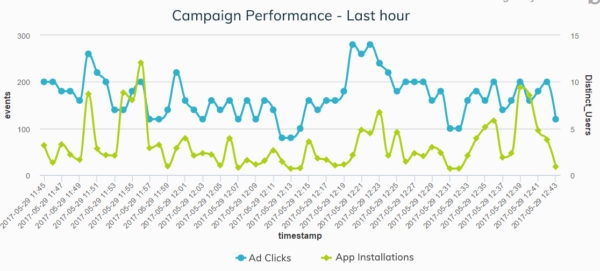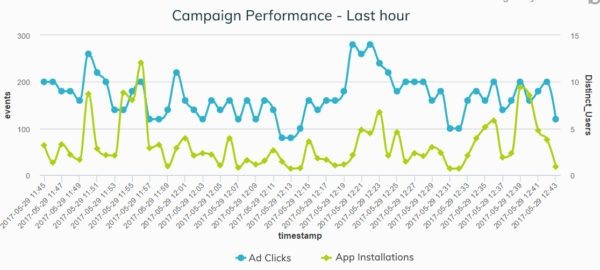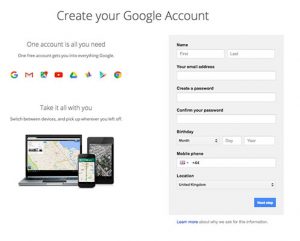— August 7, 2017
“The global BI and analytics market will reach $ 18.3B in value this year, an increase of 7.3 percent over last year, and the market will grow to $ 22.8 billion by the end of 2020.” – Gartner
Competition in the field of Online Selling is getting stiffer everyday. With a failure rate hovering around 80 percent, you don’t have room to make mistakes. As soon as you launch, it isn’t only necessary but critical that you gain a full understanding of what is driving your customers to purchase and what keeps them coming back.
You need to listen to the story your customers are telling you. Look at it as a trail of digital breadcrumbs, that shows where your customers are going and where they’ve come from. This is the now and the future of BI (Business Intelligence). Think of all the user actions on your site. These can number in the millions or even billions depending on the traffic you’re getting. Every click. Download of content. View of an item. Purchase. Return. These are all steps in the customer journey that are there for you to uncover the full story. This is no easy feat but it can be done.
Now it’s your job to connect the data dots to get a holistic view of your customer behavior.
To understand the complete customer journey and uncover the story they are telling you, here are those 3 critical decision you need to make early on.

1. Define your goals and decide on an analytics solution that will empower you to realize them. There comes a time for any online business to go beyond the simple KPIs to answer those vital questions that will fuel immediate growth.
Here are a few questions that you might want to start asking:
- Which of your customers are buying what type of products?
- Which marketing campaigns and what types of customers are bringing in the most revenue?
- Which items are customers most leaving abandoned in their shopping cart?
“Consumer-facing companies must be able to gather and manage the right data, apply analytics that generate insights, and translate those insights into effective frontline action.” – McKinsey & Company
In order to obtain the answers to these questions, eCommerce operators need to go beyond traditional analytics and find a Business Intelligence (BI) solution that facilitates the collection, enrichment and analysis of both unstructured and structured data. This can only be done with a solution that utilizes time-segmented analysis to uncover patterns in customer behavior in real time, thereby empowering eCommerce businesses to act on those insights to make immediate business decisions that will drive growth.

2. Do your homework. Find the analytics solution that best fits your needs.
“Cloud deployments of BI and analytics platforms have the potential to reduce cost of ownership and speed time to deployment” Rita Sallam – Research VP – Gartner
You might be tempted to build an analytics solution in-house that you can personalize to meet the needs of your business. However, the beginning is your most important period of growth, and as quoted above you need SPEED, so building your own solution can be a waste of both time and resources. Taking into account that building a solution can take as much as 12-18 months to complete, you’ll be wasting precious time, time that is vital in understanding your customers.
When your business is generating millions of customer events monthly, that data needs to be stored, enriched and managed. Do you feel that you have the experience necessary to build a data warehouse that is fully managed and scalable? As an eCommerce business just starting out, you might want to consider leaving this gargantuan task to experts, so that you can focus on optimizing your product.
With this focus on your product, you will want to understand customer behavior and their entire journey from the beginning to the end, from registration to checkout. Thus, you’ll be in a position where you can maximize engagement and optimize your marketing campaigns for the highest rate of success.
You need to be able to integrate your internal data sets emanating from your main database with your external data sets such as:
- Mobile attribution using such solutions as Appsflyer
- Marketing channels from Google Adwords, Facebook ads or HubSpot email campaigns
- Salesforce or other CRM Data
Real-time ROI analysis of All your Marketing Channels
Because an advanced analytics solution can merge revenue data (from eCommerce or Google Analytics) and cost data (from Google AdWords, Facebook Ads, any other ad platforms or data sources), marketers can finally see, in real-time, the ROI of all their marketing initiatives.
Being able to unify all this customer data emanating from a myriad of sources such as mobile, web and social media over a specified time period is imperative to building a timeline of customer activity.
No matter if you decide to build an analytics solution in-house or purchasing an out-of-the-box solution, you want to make sure that these powerful behavioral analytics capabilities are at your disposal.
3. Decide to implement analytics as early as possible in your product life cycle.
Online businesses that have garnered a significant amount of active users can distinguish themselves from the eCommerce pack early on by garnering customer behavioral insight as early as beta launch. By leveraging these insights, online businesses can implement the product changes required that will optimize the user experience and better prepare you for quicker growth.
For example, your eCommerce business is slated to launch a new line of women’s active wear with the goal of growing this new line of products. Even though you have fostered a huge number of active users, you may want to consider the implementation of analytics before you begin marketing this new product line to your active users. By harnessing the power of the analytics solution you’ve chosen to implement, before promoting it to your active customer base, the insights you’ve gained will empower you to optimize the user experience and facilitate user growth.
For instance, by implementing an advanced analytics solution, you may learn that your female shoppers who purchased active wear were more likely to also purchase travel accessories.
Barb Mosher Zinck, a senior content marketer and marketing technology analyst, recommends identifying the most “high-value customer journeys” and augmenting them “one customer journey at a time.”
Relating to Barb’s insight directly above, upon examination of the behavior of this demographic, you may also discover that this segment of users purchased travel accessories a week after first registering on your site and browsing products for the first time. You also discover that these shoppers spent over 200 dollars on average on their first checkout. Since these customers typically on their first purchase spent over 100 dollars within a week of first browsing your site, you can arrive at the conclusion that these were shoppers who carried a high LTV (Lifetime Value). It is these insights that will maximize your new product campaign effectiveness.
There is no shortage of challenges when it comes to operating a successful eCommerce site, and the vital decisions mentioned above will either take you to the top or bottom. FAST. Above I’ve listed these decisions you need to make. Understanding the user journey. This lies at the core of any successful business, whether online or off. As I mentioned, it is vital to explore the various analytics solutions out there ASAP and define measurable goals. The earlier you can unify and connect the slew of data points needed to gain a full understanding of the customer’s path to purchase, the sooner you will achieve rapid growth.
To see how you can apply advanced analytics to your eCommerce business, feel free to download this eBook.
Digital & Social Articles on Business 2 Community
(48)
Report Post






